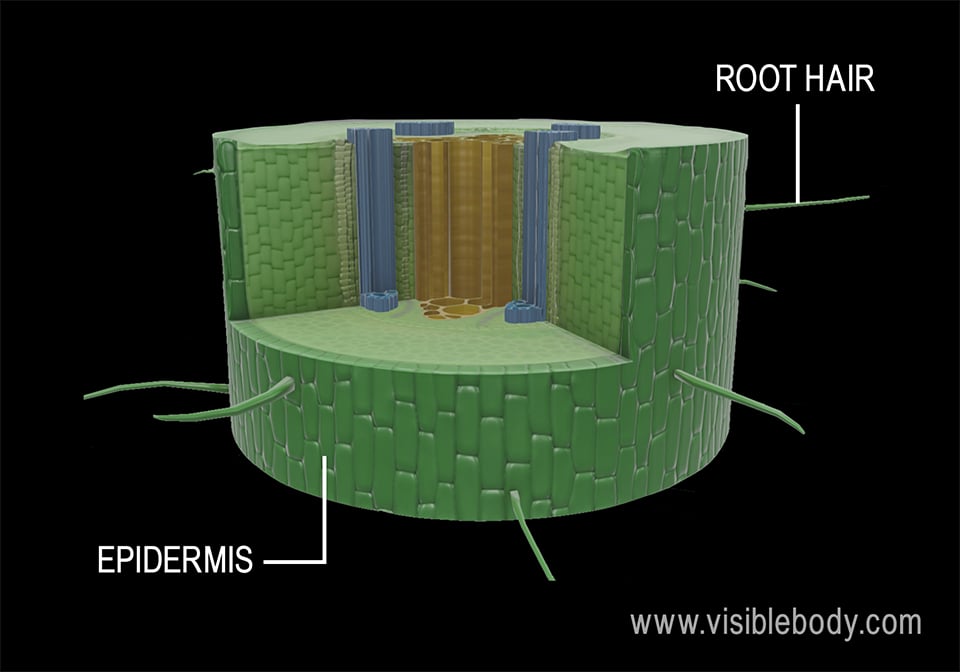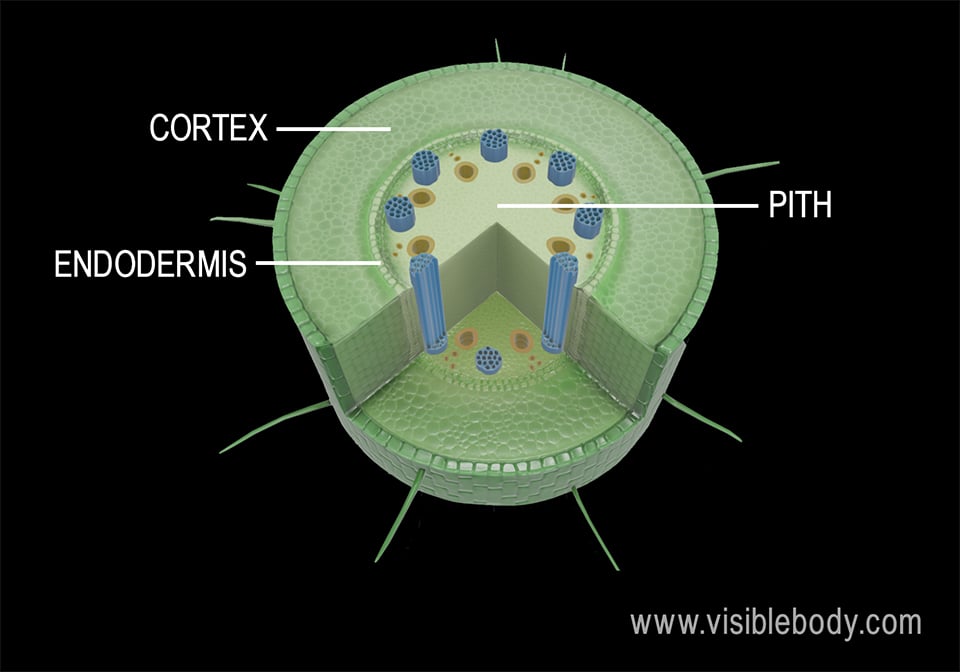Before we look at the structures and tissues inside monocot and dicot roots, let’s examine how their overall shape and structure differs. Monocot roots are fibrous, meaning they form a wide network of thin roots that originate from the stem and stay close to the surface of the soil. In contrast, dicots have “taproots,” meaning they form a single thick root that grows deep into the soil and has smaller, lateral branches.

Water and nutrients from the surrounding soil pass through the root’s tissues until they reach the central vascular cylinder. The root’s xylem transports the water and nutrients upward toward the stem.
The outside of both monocot and dicot roots is covered with a series of hair-like protrusions, appropriately called root hairs. They maximize the root’s water and mineral absorption capabilities because they increase its surface area.
The epidermis, made up of dermal tissue, is the outermost layer of the root. Like the epidermis of human skin, the root’s epidermis is protective, preventing damage to the root.
Beneath the epidermis is a layer of ground tissue called the cortex. The type of ground tissue cells located within the cortex differs depending on whether the plant is a monocot or a dicot. Parenchyma makes up the ground tissue found in the cortex of dicot roots. Parenchyma cells have thin walls and are usually globular in shape. The cortex of monocot roots can contain sclerenchyma in addition to parenchyma. The cells that make up sclerenchyma have thicker walls, which makes sclerenchyma more rigid in texture than parenchyma.
The endodermis, another layer of dermal tissue, serves as a selective barrier between the ground tissue of the cortex and the stele—the central part of the root where the xylem and phloem develop. The pericycle is the outermost layer of the stele. It contains cells that can divide and give rise to lateral roots.
Another type of ground tissue, called pith, can be found in the center of monocot roots. It is composed of parenchyma.

Monocots and dicots contain two main types of vascular tissue: the xylem and phloem. The xylem carries water and dissolved minerals upward from the roots to the stem and leaves. The phloem carries dissolved sugars, organic compounds, and other substances (such as hormones) downward from the plant’s leaves to the stem and roots.
In monocot roots, xylem and phloem tissue bundles are arranged in a circular fashion around the central pith, which consists of ground tissue (parenchyma). Monocot roots have a larger number of vascular structures than dicot roots.
The arrangement of xylem and phloem is different in dicots than it is in monocots. The xylem is all located in the middle of the dicot root, and bundles of phloem are arranged around it, separated from it by vascular cambium. When cells of the vascular cambium divide, they differentiate into secondary growth xylem and phloem, which increases the girth of dicot roots and stems. Monocots do not have vascular cambium.
Since dicot roots don’t have a central pith area, parenchyma serves as connective tissue in the region where the dicot root’s vascular structures are found.
A collection of resources describing vascular cambium from Science Direct.
A description of plant tissues from the University of California Museum of Paleontology.
When you select "Subscribe" you will start receiving our email newsletter. Use the links at the bottom of any email to manage the type of emails you receive or to unsubscribe. See our privacy policy for additional details.